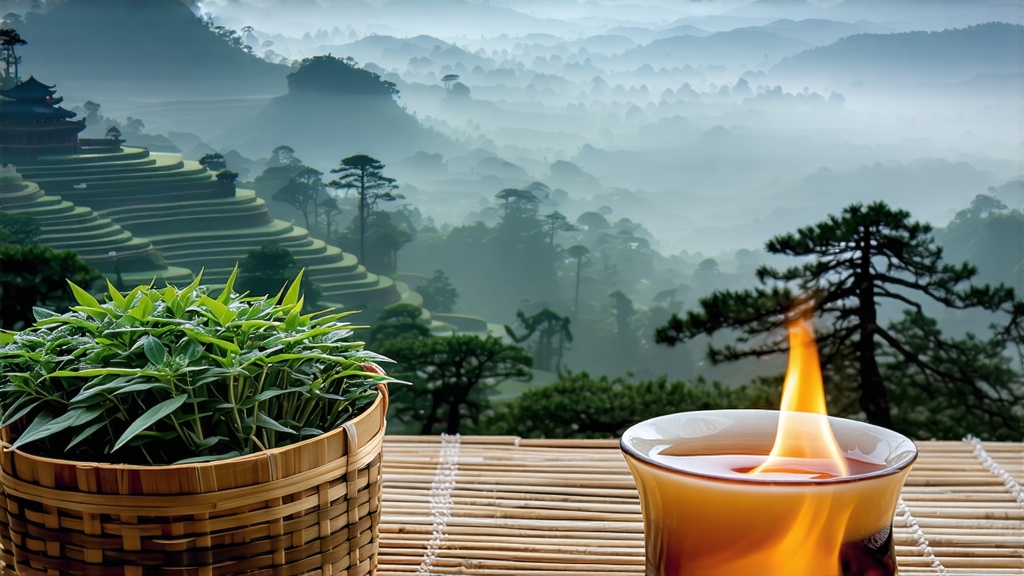
Ask most Western drinkers to name a Chinese black tea and they will probably say “Lapsang Souchong.” Yet few realize that this fragrant, campfire-scented leaf from the Wuyi massif is not just another flavored novelty; it is the very prototype of black tea, the first to be fully oxidized, the first to sail around the Cape of Good Hope, and the first to fill London’s coffeehouses with the perfume of distant China. To understand Lapsang Souchong is to hold a mirror to four centuries of global trade, imperial ambition, and the quiet genius of Fujian’s tea masters.
History: From Mountain Hermit to Global Celebrity
Local legend places the birth of Lapsang Souchong in 1568, late Ming dynasty, when a passing army requisitioned the drying sheds of Tongmu village. To save the harvest, farmers rushed the leaves over fresh pinewood fires; the smoke impregnated the tea, creating an entirely new aroma. Whatever the truth, by 1604 Dutch merchants were buying “bohea” (the Min-bei pronunciation of Wuyi) in Batavia and auctioning it in Amsterdam for more than silver. When Catherine of Braganza brought her tea caddy to the English court in 1662, the leaves inside were almost certainly Lapsang Souchong. The East India Company’s ledgers list it as “Souchong, best sort,” commanding twice the price of green tea. Thus, a smoke-cured accident became the taste of Europe’s Enlightenment.
Terroir: Why Only Tongmu Tastes Like Tongmu
The national-level protected origin zone sits at 27° N, 1,200–1,500 m above sea, inside a subtropical monsoon belt where morning fog lingers until noon. Granitic soils, 90 % forest cover, and a diurnal swing of 15 °C force slow growth, concentrating sugars and amino acids. Only four hamlets—Tongmu, Guan’ao, Muta, and Dafang—may legally sell authentic Lapsang Souchong; leaves picked one ridge outside the boundary are mere “Wuyi black.” The indigenous cultivar is Xiao Ye Zhong (“small-leaf species”), a semi-wild shrub whose leaves are half the size of modern Yunnan hybrids yet twice as aromatic.
Harvest Calendar: One Bud, Two Leaves, Three Aromas
Spring plucking begins around Qingming (early April) when the first orange-red bud emerges. Summer tea, picked in June, gives a sweeter cup but lighter smoke; autumn leaves, harvested before the October chill, are reserved for export blends. The top grade, called “Jin Jun Mei” when bud-only, diverged commercially in 2005, yet shares the same withering sheds; connoisseurs still regard classical Lapsang Souchong as two leaves and a bud, the “zhong kai mian” standard.
Craft: Where Fire Becomes Flavor
Unlike any other black tea, Lapsang Souchong is finished over pine embers, but the sequence is delicate. After plucking, the leaves are withered on bamboo screens suspended above the ground floor of two-storey wooden houses; smoke from the ground-level hearth rises naturally, never touching the leaf directly. Once the leaf loses 60 % moisture, it is rolled under cloth for 45 minutes to rupture cells, then oxidized in wooden barrels lined with wet cloths; the humidity is raised to 90 % to accelerate enzymatic browning. The critical step is “song xun” (pine-smoking): pinewood logs 30 cm long are burned to glowing coals, extinguished with a sprinkle of water, and covered with a bamboo tray. The smoldering resin coats the leaf for 6–8 hours, repeated up to three times. Finally, the tea is pan-fired at 80 °C to fix the aroma, then rested for 30 days so the phenols integrate; rushed shipments taste harsh, like kerosene.
Grades: A Spectrum from Campfire to Cognac
- Traditional Pinewood Lapsang: loose, charcoal-black strips, unmistakable tarry nose, yet the liquor is Burgundy-red, silky, with longan sweetness.
- New-Style or “Wuyi Black”: same leaf, zero smoke; instead, malt, honey,